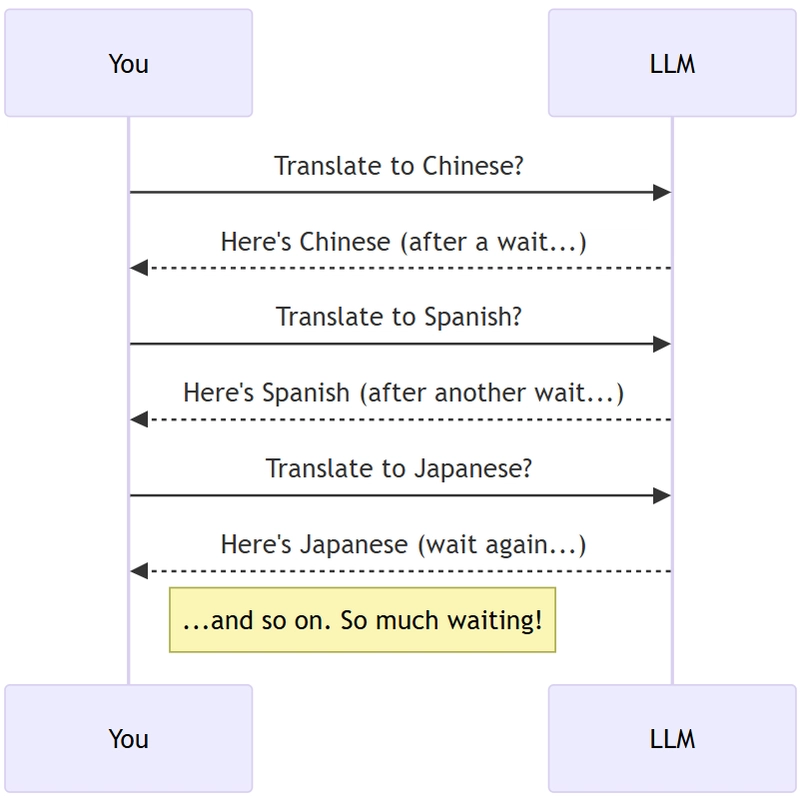How to Implement OAuth2 Client Credentials Flow in Kotlin
Introduction Implementing OAuth2 client credentials flow using Spring WebClient and Spring Security can sometimes lead to challenges, especially when debugging errors like a 500 Internal Server Error. In this article, we will explore the details of setting up the OAuth2 client credentials flow in Kotlin. Whether you’re working on a microservices architecture or a standard application, implementing OAuth2 correctly is crucial for secure API access. Understanding OAuth2 Client Credentials Flow The OAuth2 client credentials flow is used when applications need to authenticate to access their infrastructure, such as backend services. Unlike the authorization code flow typically used in user authentication, the client credentials flow does not involve user interaction. It requires just the client ID and client secret to obtain an access token. In your configuration, you provided essential properties in the application.properties file: spring.security.oauth2.client.registration.someclient.client-id= spring.security.oauth2.client.registration.someclient.client-secret= spring.security.oauth2.client.registration.someclient.authorization-grant-type=client_credentials spring.security.oauth2.client.registration.someclient.scope=read,write spring.security.oauth2.client.provider.someclient.token-uri=https://account..../oauth2/token spring.security.oauth2.client.provider.someclient.authorization-uri=https://account..../oauth2/authorize These properties define the OAuth2 client registration and the provider details including the token URI. Step-by-Step Implementation To properly implement the OAuth2 client credentials flow, let’s break down your existing Kotlin code and highlight areas that may require attention. Configuring WebClient First, ensure your WebClient is properly configured to use OAuth2 authorization manager. Here’s a snippet of your WebClientConfig: import org.springframework.context.annotation.Bean import org.springframework.context.annotation.Configuration import org.springframework.security.oauth2.client.OAuth2AuthorizedClientManager import org.springframework.security.oauth2.client.OAuth2AuthorizedClientProviderBuilder import org.springframework.security.oauth2.client.registration.ClientRegistrationRepository import org.springframework.security.oauth2.client.web.DefaultOAuth2AuthorizedClientManager import org.springframework.security.oauth2.client.web.OAuth2AuthorizedClientRepository import org.springframework.security.oauth2.client.web.reactive.function.client.ServletOAuth2AuthorizedClientExchangeFilterFunction import org.springframework.web.reactive.function.client.WebClient @Configuration class WebClientConfig { @Bean fun authorizedClientManager( clientRegistrationRepository: ClientRegistrationRepository, authorizedClientRepository: OAuth2AuthorizedClientRepository ): OAuth2AuthorizedClientManager { val authorizedClientProvider = OAuth2AuthorizedClientProviderBuilder .builder() .clientCredentials() .build() val authorizedClientManager = DefaultOAuth2AuthorizedClientManager( clientRegistrationRepository, authorizedClientRepository ) authorizedClientManager.setAuthorizedClientProvider(authorizedClientProvider) return authorizedClientManager } @Bean fun webClient(authorizedClientManager: OAuth2AuthorizedClientManager): WebClient { val oauth2Client = ServletOAuth2AuthorizedClientExchangeFilterFunction(authorizedClientManager) oauth2Client.setDefaultClientRegistrationId("someclient") return WebClient.builder() .apply(oauth2Client.oauth2Configuration()) .build() } } Ensure that the client ID and client secret are correctly set in your properties—mistakes here often lead to 401 Unauthorized errors. Calling the Authorization Server In your OAuth2Service, ensure you are correctly calling the authorization server and checking the responses. Make sure the token request is being executed as follows: import org.springframework.stereotype.Service import reactor.core.publisher.Mono @Service class OAuth2Service( private val webClient: WebClient, ) { fun callAuthorizationServer(): Mono { return webClient .post() .retrieve() .bodyToMono(String::class.java) .onErrorMap { e -> RuntimeException("Authentication failed", e) } } } Remember to use the appropriate HTTP method when calling the token endpoint. The callAuthorizationServer function must handle responses properly to avoid unhandled errors. Controller Configuration Ensure your controller properly connects the service correctly, as you have shown: import org.springframework.web.bind.annotation.GetMapping import org.springframework.web.bind.annotation.RestController import reactor.core.publisher.Mono @RestController class TestController( private val oauth2Service: OAuth2Service ) { @GetMapping

Introduction
Implementing OAuth2 client credentials flow using Spring WebClient and Spring Security can sometimes lead to challenges, especially when debugging errors like a 500 Internal Server Error. In this article, we will explore the details of setting up the OAuth2 client credentials flow in Kotlin. Whether you’re working on a microservices architecture or a standard application, implementing OAuth2 correctly is crucial for secure API access.
Understanding OAuth2 Client Credentials Flow
The OAuth2 client credentials flow is used when applications need to authenticate to access their infrastructure, such as backend services. Unlike the authorization code flow typically used in user authentication, the client credentials flow does not involve user interaction. It requires just the client ID and client secret to obtain an access token.
In your configuration, you provided essential properties in the application.properties file:
spring.security.oauth2.client.registration.someclient.client-id=
spring.security.oauth2.client.registration.someclient.client-secret=
spring.security.oauth2.client.registration.someclient.authorization-grant-type=client_credentials
spring.security.oauth2.client.registration.someclient.scope=read,write
spring.security.oauth2.client.provider.someclient.token-uri=https://account..../oauth2/token
spring.security.oauth2.client.provider.someclient.authorization-uri=https://account..../oauth2/authorize
These properties define the OAuth2 client registration and the provider details including the token URI.
Step-by-Step Implementation
To properly implement the OAuth2 client credentials flow, let’s break down your existing Kotlin code and highlight areas that may require attention.
Configuring WebClient
First, ensure your WebClient is properly configured to use OAuth2 authorization manager. Here’s a snippet of your WebClientConfig:
import org.springframework.context.annotation.Bean
import org.springframework.context.annotation.Configuration
import org.springframework.security.oauth2.client.OAuth2AuthorizedClientManager
import org.springframework.security.oauth2.client.OAuth2AuthorizedClientProviderBuilder
import org.springframework.security.oauth2.client.registration.ClientRegistrationRepository
import org.springframework.security.oauth2.client.web.DefaultOAuth2AuthorizedClientManager
import org.springframework.security.oauth2.client.web.OAuth2AuthorizedClientRepository
import org.springframework.security.oauth2.client.web.reactive.function.client.ServletOAuth2AuthorizedClientExchangeFilterFunction
import org.springframework.web.reactive.function.client.WebClient
@Configuration
class WebClientConfig {
@Bean
fun authorizedClientManager(
clientRegistrationRepository: ClientRegistrationRepository,
authorizedClientRepository: OAuth2AuthorizedClientRepository
): OAuth2AuthorizedClientManager {
val authorizedClientProvider = OAuth2AuthorizedClientProviderBuilder
.builder()
.clientCredentials()
.build()
val authorizedClientManager = DefaultOAuth2AuthorizedClientManager(
clientRegistrationRepository, authorizedClientRepository
)
authorizedClientManager.setAuthorizedClientProvider(authorizedClientProvider)
return authorizedClientManager
}
@Bean
fun webClient(authorizedClientManager: OAuth2AuthorizedClientManager): WebClient {
val oauth2Client = ServletOAuth2AuthorizedClientExchangeFilterFunction(authorizedClientManager)
oauth2Client.setDefaultClientRegistrationId("someclient")
return WebClient.builder()
.apply(oauth2Client.oauth2Configuration())
.build()
}
}
Ensure that the client ID and client secret are correctly set in your properties—mistakes here often lead to 401 Unauthorized errors.
Calling the Authorization Server
In your OAuth2Service, ensure you are correctly calling the authorization server and checking the responses. Make sure the token request is being executed as follows:
import org.springframework.stereotype.Service
import reactor.core.publisher.Mono
@Service
class OAuth2Service(
private val webClient: WebClient,
) {
fun callAuthorizationServer(): Mono {
return webClient
.post()
.retrieve()
.bodyToMono(String::class.java)
.onErrorMap { e -> RuntimeException("Authentication failed", e) }
}
}
Remember to use the appropriate HTTP method when calling the token endpoint. The callAuthorizationServer function must handle responses properly to avoid unhandled errors.
Controller Configuration
Ensure your controller properly connects the service correctly, as you have shown:
import org.springframework.web.bind.annotation.GetMapping
import org.springframework.web.bind.annotation.RestController
import reactor.core.publisher.Mono
@RestController
class TestController(
private val oauth2Service: OAuth2Service
) {
@GetMapping("/test-me")
fun completeFlow(): Mono> {
return oauth2Service.callAuthorizationServer()
.map { response ->
mapOf("authServerResponse" to response)
}
}
}
Security Configuration
import org.springframework.context.annotation.Bean
import org.springframework.security.config.annotation.web.builders.HttpSecurity
import org.springframework.security.config.annotation.web.configuration.EnableWebSecurity
import org.springframework.security.web.SecurityFilterChain
@Configuration
@EnableWebSecurity
class WebSecurityConfiguration {
@Bean
fun securityFilterChain(http: HttpSecurity): SecurityFilterChain {
return http
.csrf { it.disable() }
.authorizeHttpRequests { authorize ->
authorize.anyRequest().permitAll()
}
.oauth2Client {}
.build()
}
}
This configuration allows unauthenticated access to the /test-me endpoint. Make sure that proper authentication filtering is in place if needed.
Troubleshooting 500 Errors
The 500 Internal Server Error you are encountering may stem from a few common causes:
- Invalid Client Credentials: Ensure that the client ID and secret are correct and have proper permissions.
- Network Issues: Ensure that your application can reach the authorization server, and there are no firewall or DNS issues.
- Server Logs: Check logs from both your application and the authorization server for hints on what is causing the failure.
Frequently Asked Questions
-
What is OAuth2 Client Credentials flow?
The OAuth2 client credentials flow allows applications to authenticate and access resources on their backend services without user interaction. -
How to debug a 500 error when implementing OAuth2?
Check for proper client credentials, network connectivity, and inspect server logs for detailed error causing the issue. -
Can I use Postman to test my OAuth2 implementation?
Yes, Postman is a useful tool for testing APIs and can simulate OAuth2 flows to validate your configuration.
Conclusion
Implementing the OAuth2 client credentials flow with Spring WebClient in Kotlin can be challenging due to the number of configurations involved. By ensuring your configurations are correct, handling responses correctly, and utilizing effective debugging techniques, you can create a robust authentication mechanism for your applications. Remember to refer to the official documentation for Spring Security and OAuth2 for further best practices.
























![[Exclusive] Infinix GT DynaVue: a Prototype that could change everything!](https://www.gizchina.com/wp-content/uploads/images/2025/05/Screen-Shot-2025-05-10-at-16.07.40-PM-copy.png)















































![Beats Studio Buds + On Sale for $99.95 [Lowest Price Ever]](https://www.iclarified.com/images/news/96983/96983/96983-640.jpg)

![New iPad 11 (A16) On Sale for Just $277.78! [Lowest Price Ever]](https://www.iclarified.com/images/news/97273/97273/97273-640.jpg)























-xl.jpg)





















































































































































































































![[The AI Show Episode 146]: Rise of “AI-First” Companies, AI Job Disruption, GPT-4o Update Gets Rolled Back, How Big Consulting Firms Use AI, and Meta AI App](https://www.marketingaiinstitute.com/hubfs/ep%20146%20cover.png)
































































































































































![Ditching a Microsoft Job to Enter Startup Purgatory with Lonewolf Engineer Sam Crombie [Podcast #171]](https://cdn.hashnode.com/res/hashnode/image/upload/v1746753508177/0cd57f66-fdb0-4972-b285-1443a7db39fc.png?#)


![[FREE EBOOKS] Offensive Security Using Python, Learn Computer Forensics — 2nd edition & Four More Best Selling Titles](https://www.javacodegeeks.com/wp-content/uploads/2012/12/jcg-logo.jpg)

















































































.jpg?width=1920&height=1920&fit=bounds&quality=70&format=jpg&auto=webp#)














